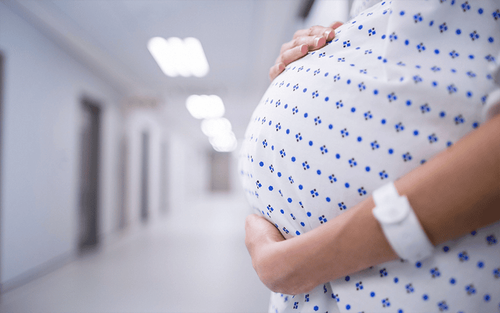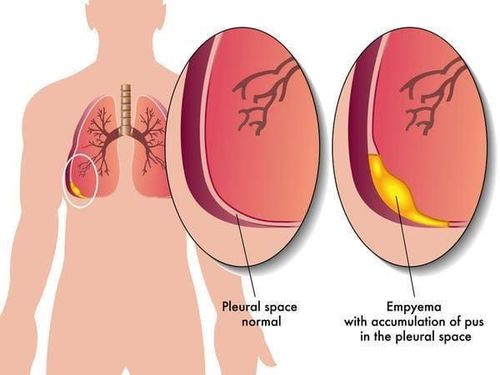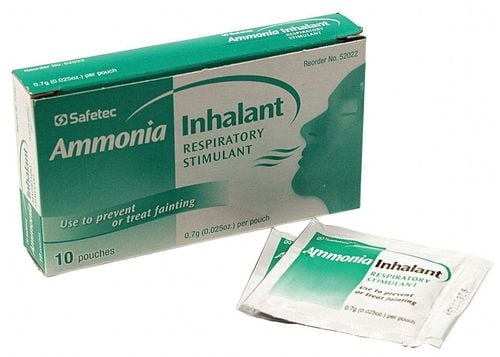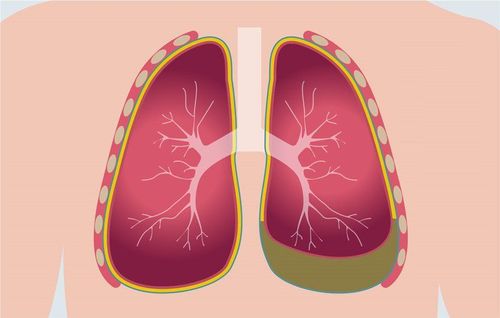This is an automatically translated article.
The article was consulted by Specialist Doctor I Nguyen Thanh Hai - Doctor of Radiology - Department of Diagnostic Imaging and Nuclear Medicine - Vinmec Times City International Hospital
Pleural deposits are the result of empyema that is not diagnosed and treated in time. When detected through clinical and subclinical, patients need early treatment to avoid serious sequelae. So can pleural deposits be diagnosed on CT scan?
1. What is pleural deposits?
Pleural deposits are generally understood as pleural disease, which can include pneumonia or pleurisy, tuberculosis or empyema, and some other forms of thoracic trauma. This is a pathological condition with two main types of lesions:
There is a cavity between the lung and the chest wall. A layer of fibrous tissue covers the outside of the lung, bunching up making it impossible for the lungs to expand. Pleural deposits may appear 3 to 5 weeks after the onset of the underlying disease. Because most of them have superinfection, the pleural deposits are also considered as one of the 3 stages of empyema:
Stage 1: exudative purulent inflammation Stage 2: fibrin deposition creates septum and pus Stage Stage 3 (also known as the deposition phase): fibrin and collagen deposition. However, for thoracic trauma, the etiology and mechanism of deposit formation are different from those of medical diseases. In which, there are 2 very important components:
Atelectasis of lung parenchyma and blood clot. Fibrin in the pleural space.
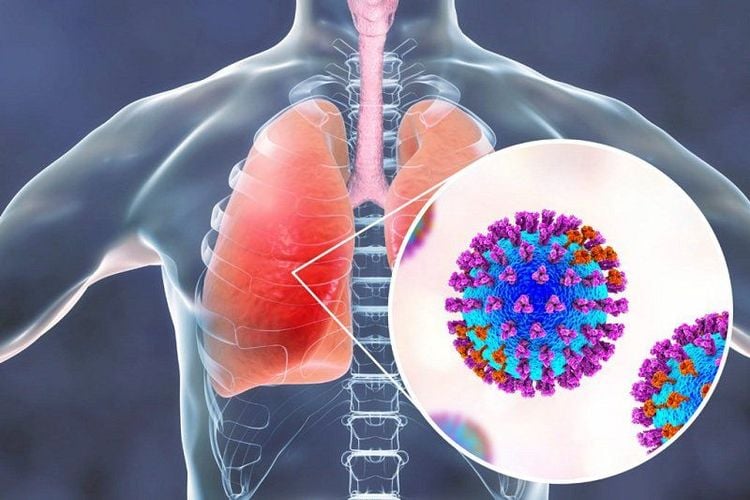
2. Diagnosis of pleural deposits after thoracic trauma by CT
This condition is most common after blunt chest trauma, with hemothorax and pneumothorax, with minimal pleural drainage. A CT scan of the chest shows an outbreak (or fluid and air) and a collapsed lung at the base.
Open chest wounds with pleural drainage are also quite common, mostly as a result of open chest wounds that bleed profusely. Chest CT scan showed outbreaks and blood clots, combined with signs of collapsed lung at the bottom
The next case was trauma, the chest wound was not drained in time. This group is rare, mainly due to the lack of timely pleural drainage. Similar to the above, a chest computed tomography scan will detect an outbreak (or fluid-air) with signs of collapse at the bottom of the lung.
The last group is superinfection after pleural drainage due to trauma, chest wound, very rare. The main cause is superinfection and empyema during treatment. The chest CT scan also showed similar signs above.
To diagnose pleural deposits, doctors need to combine with clinical examination, detect functional signs, physical symptoms of respiratory and thoracic pathology and combine with a number of approaches. Other clinical symptoms, such as:
Routine X-ray: Diseased thorax and intercostal space narrow, opacity of the lung fundus curvature Ultrasonography of the pleural cavity : Basal wall effusion with or without blood clot Examination Blood test : Mild to moderate inflammatory reaction, mild anemia or infection Bacterial culture of pleural fluid: Manifestation of severe systemic infection, especially when antibiotics have not been used.
3. Notes when taking CT thorax
Chest CT scan, also known as thoracic computed tomography, a technique that uses X-ray beams to scan the chest, combined with a computer to create 2D, 3D images, from which the diagnosis can be made. condition of the lungs, thoracic cavity. This method can inject contrast dye or not depending on the case.
This is a useful technique, helping the doctor to detect lesions in the lungs, pleura, mediastinum, and other components of the thorax... including lung tumors that can be taken by chest X-ray. This is usually not possible. This modern imaging technique needs to be prescribed by a specialist, for example, in some common cases as follows:
Family medical history of lung cancer Frequent work, exposure to the environment environment of toxic chemicals, radiation More than 50 regular smokers or more than 10 years of smoking Severe trauma to the chest area suspected of affecting the lungs Frequent difficulty swallowing, difficulty breathing, coughing up blood for unknown reasons due to...
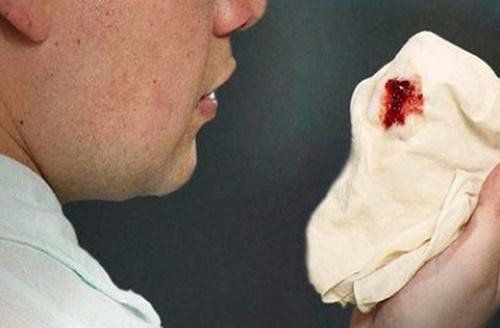
Fast for 4-6 hours if contrast is injected. Inform your doctor if you are on medication, pregnant or likely to be pregnant. pregnant, suffering from some diseases such as kidney failure, allergies, etc. It is necessary to choose a medical facility that specializes in imaging diagnostics, reputable tomography. Currently, in lung CT scanning, Vinmec International General Hospital has applied modern equipment and machinery to diagnose the disease and stage it before treatment: Endoscopy, CT scan, PET-CT scan, MRI, histopathological diagnosis, gene-cell testing,... Before the chest CT scan, the patient is asked to remove metal objects on the body. Although X-rays have a strong wavelength that penetrates the body, the radiation levels in each scan are at the allowable level, so it is safe for health. However, this method is not recommended for some of the following cases and subjects:
Pregnant and lactating women. If necessary, the doctor will reduce the intensity of X-rays or choose another suitable diagnostic method to limit the impact on the baby. Patients with severe kidney failure when having a chest CT scan with intravenous contrast can experience contrast toxicity. Therefore, if necessary, the doctor will have to administer an antidote. People with a history of chronic disease or hyperthyroidism, sickle cell disease, bronchial asthma, diabetes ... This is also a group susceptible to contrast dye toxicity, so it is necessary to inform the doctor in advance. People with allergies with contrast agent. The doctor will consider the use of supportive drugs to control symptoms such as itching, burning, difficulty breathing,... Severe dehydration or iodine allergy must be contraindicated with contrast injection to avoid causing dangerous to life. However, it is completely possible to take a scan without contrast injection.
In summary, thoracic CT is an important method for detailed evaluation of lung, pleural, mediastinal, and other intrathoracic components including pleural deposits. Thanks to the implementation of this modern method, the doctor will avoid missing the lesion, find the cause of the symptoms to have an effective treatment.
The best solution when having lung problems, you should go to your doctor to discuss and have the most timely intervention.
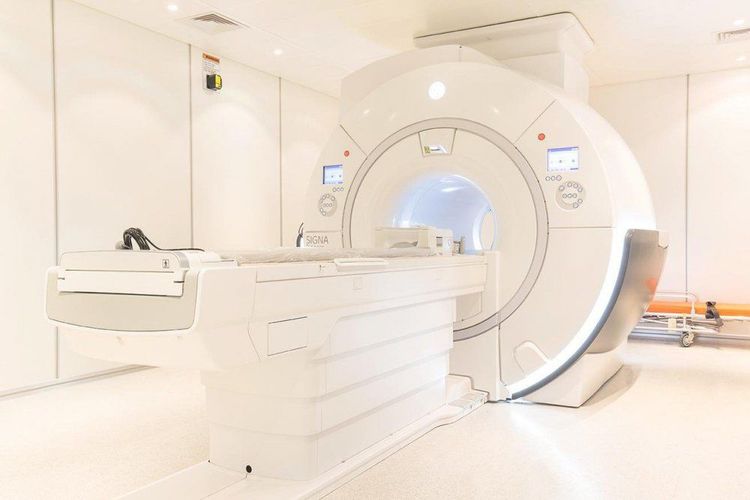
Vinmec International General Hospital currently has a team of highly qualified doctors from many major hospitals across the country who have successfully treated many cases from mild to severe. Along with the good quality of examination, the hospital has a system of modern equipment and facilities that are put into use during the health examination. Therefore, customers can completely trust and be assured of the medical quality at Vinmec.
Please dial HOTLINE for more information or register for an appointment HERE. Download MyVinmec app to make appointments faster and to manage your bookings easily.






